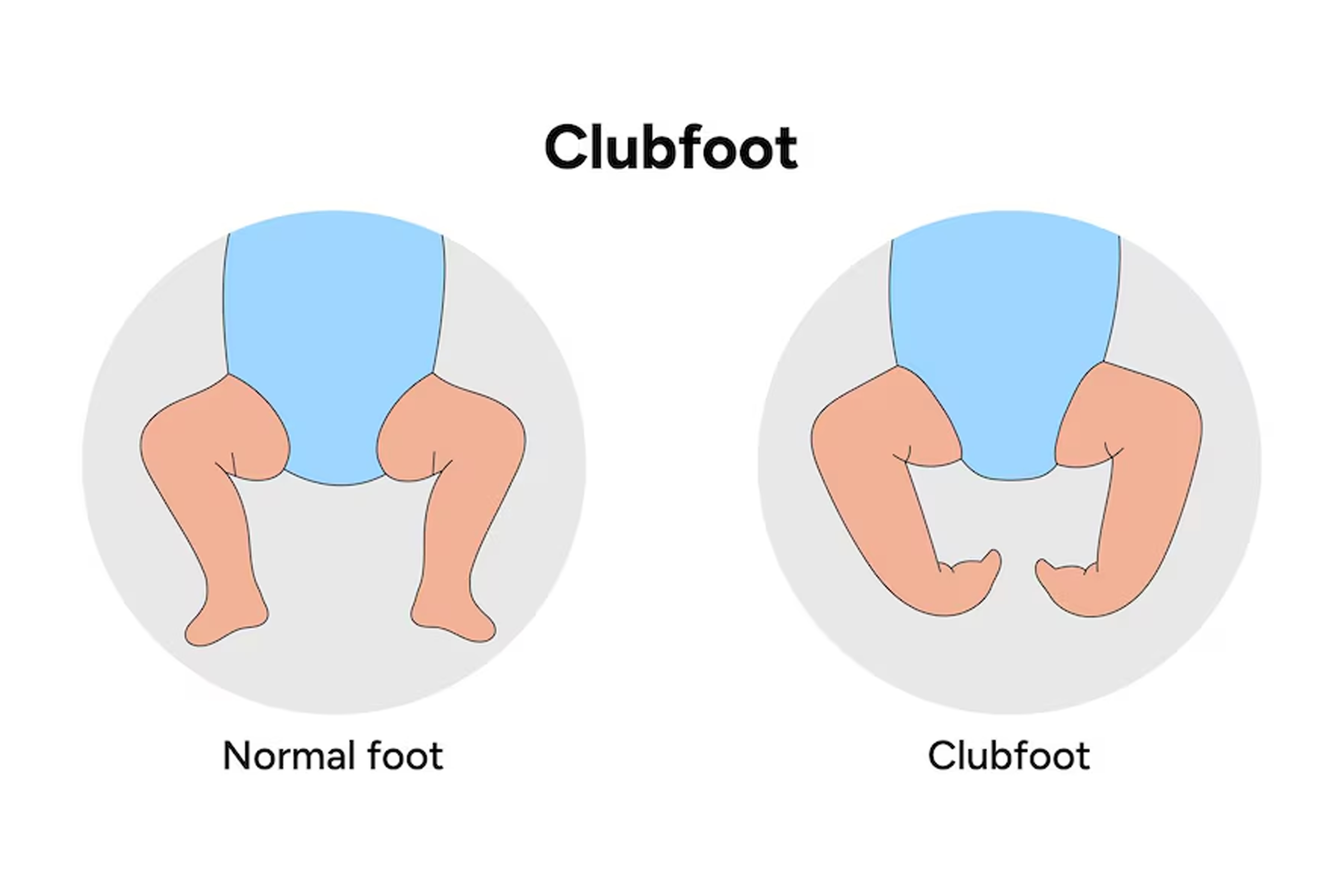Leg abnormalities in babies are nothing less than devastating experiences for parents to endure. Conditions like overgrowth of limbs, undergrowth of limbs, twisted foot, etc. are generally seen in newborns.
This blog will explore one such condition - where you see a newborn baby with a foot that is not straight, commonly known as Clubfoot. We will cover its causes, symptoms, diagnosis, management, recovery, and precautions for clubfoot management available at KM NU Hospitals, Ambur.
What is Clubfoot in children:
Clubfoot is a by-birth condition where a newborn's foot is twisted inward with an arched sole. It affects about 1 in every 1,000 live births and is more common in males than females. Effective management and treatment can ensure that children with clubfoot can walk, run, and play without pain or difficulty.
Causes
The exact cause of clubfoot is unknown in most cases. However, several factors may contribute to its development:
- Genetics: Clubfoot can run in families. Meaning if your parents or previous generations had abnormal feet, there are chances it can pass down to the next generation.
- Muscle Imbalance: Abnormalities in the muscles, tendons, and bones of the foot and leg can lead to the condition.
- Environmental Factors: External factors during pregnancy, such as limited space in the womb or maternal smoking, may increase the risk of clubfoot.
Symptoms of Clubfoot in newborns:
Identifying clubfoot early is crucial for effective treatment. Common symptoms include:
- Foot Twisted Inward: The most noticeable symptom is the inward twisting of the foot, with the sole facing inward.
- Short Achilles Tendon: The Achilles tendon may be shorter than normal, contributing to the abnormal foot position.
- Difficulty Wearing Normal Shoes: Due to the foot's abnormal shape, fitting into regular shoes can be challenging.
Diagnosis
Early diagnosis of clubfoot allows for prompt treatment by your Paediatrician. The test involves:
- Physical Examination: A thorough physical examination assesses the foot's position, flexibility, and overall structure.
- X-rays: Imaging tests like X-rays help confirm the diagnosis and determine the severity of the condition.
- Ultrasound scan: Alternatively, it can also be detected at the pregnancy stage through ultrasound.
Management of Clubfoot
There are several approaches to managing clubfoot, with the Ponseti method being the most common:
1. Ponseti Method:
This non-surgical approach involves gentle stretching and serial casting to correct the foot position gradually. The foot is manipulated and then cast in a corrected position, with casts being changed weekly. After the desired correction is achieved, a minor procedure called a tenotomy may be performed to lengthen the Achilles tendon.
How Parents Can Take Care of the Cast at Home:
- Do not apply any cream on the toes if it becomes red.
- After applying the cast, check the movement of the foot for at least 6-8 hours. If the cast is too tightly held, you can see that the toes might have turned dark pink due to the blood flow. Inform your paediatrician to correct the same at the earliest.
- Since the cast is made from the toes up to the groin area, there are high chances that the cast might get soiled with urine or diapers.
- Thus, always keep the cast clean and dry by wiping it with a moist cloth, if it gets soiled. Also, disposable diapers can be of great help.
- Use cushions or other soft pillows under the baby’s feet for support.
When to call a children’s doctor?
- If your baby gets a high fever unusually
- Cast slips out easily
- Inadequate or poor movement of toes
- Irritation, soreness, redness of toe skin
- Toes are pus-filled, strong bad smell, or some fluid drains out
2. Surgery:
In rare cases where casting isn't successful, surgery may be necessary. Surgical procedures can include lengthening the Achilles tendon or other soft tissues to achieve proper foot alignment.
Recovery
Recovery from clubfoot treatment involves several stages:
- Casting: The initial casting phase usually lasts 3-6 months. During this time, the casts are regularly changed to continue the gentle correction of the foot.
- Bracing: After the casting phase, the child will need to wear a brace for several years to maintain the correction. Consistent use of the brace is essential for preventing relapse.
- Physical Therapy: Physical therapy may be recommended to build muscle strength and improve flexibility in the foot and leg.
Precautions
To ensure successful outcomes, several precautions should be taken:
- Regular Follow-up Appointments: Consistent follow-up with a children's specialist is crucial to monitor progress and adjust treatment as needed.
- Wearing the Brace Consistently: Adherence to wearing the brace as prescribed is vital for maintaining the correction achieved through casting.
- Early Intervention: Starting treatment as early as possible and following through with the recommended treatment plan are key to achieving optimal results.
Leg Deformity Treatment Expertise at KM NU Hospitals, Ambur
Clubfoot in babies is a treatable condition. Our holistic approach ensures that each child receives individualised care tailored to their specific needs by our Paediatrician & Neonatologist Dr. Palani Rajan P at KM NU Hospitals, Ambur.
If your child has clubfoot, we invite you to visit us for comprehensive care aimed at achieving well-aligned feet and improving overall quality of life.
References:
Global-help.org: Paediatric Orthopedics
Cleveland clinic: Clubfoot diseaseHSS.EDU: Clubfoot condition
